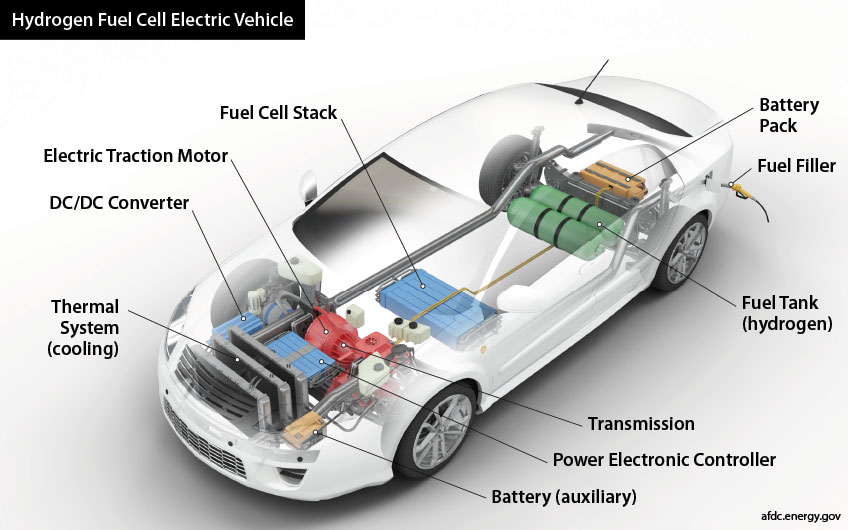Fuel Cell Electric Vehicle Basics
Fuel cell electric vehicles use fuel cell stacks to convert onboard gaseous hydrogen to electricity, which is then stored in a battery to power the vehicle's electric motor.

As with other electric vehicles, fuel cell electric vehicles are equipped with regenerative braking systems to capture the kinetic energy normally lost during breaking and store it in the battery.
Fuel cell electric vehicles are more efficient than conventional vehicles and produce no tailpipe emissions—they emit only water vapor and warm air. They can travel 300 to 400 miles on a tank of hydrogen and can refuel in three to five minutes.
Additional Resources
Learn about NREL's research efforts in transportation and mobility and hydrogen and fuel cells.
For more information about fuel cell electric vehicles, visit the U.S. Department of Energy's Alternative Fuels Data Center.
Use the Alternative Fueling Station Locator to find publicly accessible hydrogen fueling stations in the United States.
Share
Last Updated March 25, 2025
